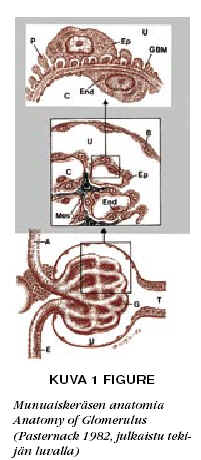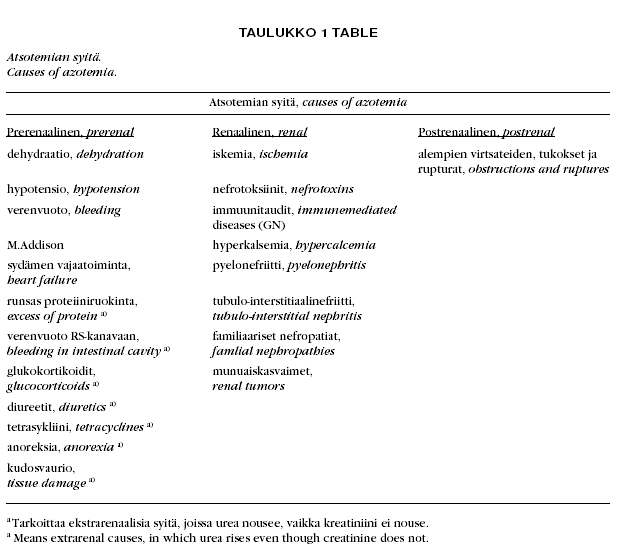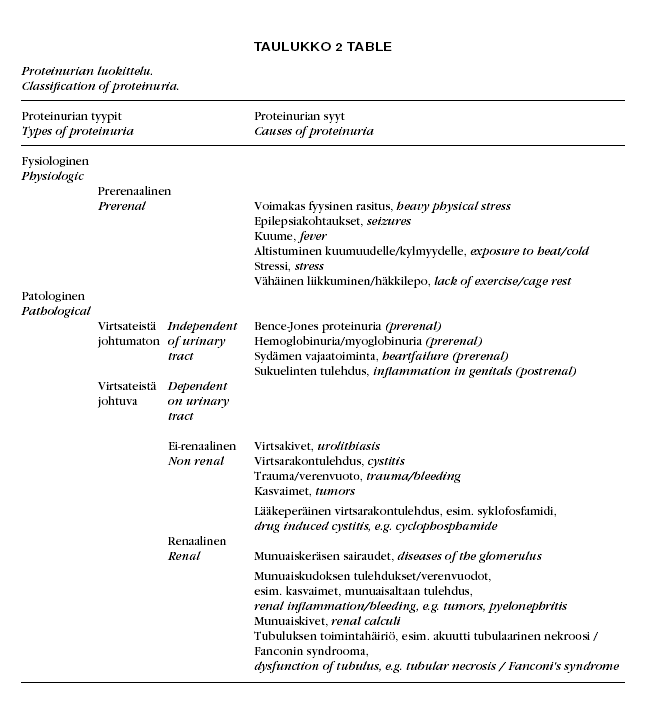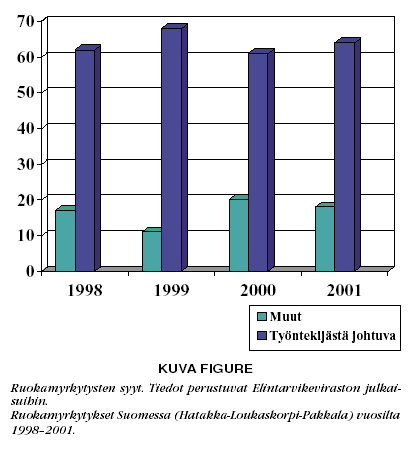
Glomerulonephritis (GN) is a common term used for diseases, in which the filtration capacity of glomerulus changes. Injuries of glomerulus are due to inflammatory changes caused by precipitable immunocomplexes (antigen-antibody complex). In secondary GN, the antigen arises from a concurrent disease. In idiopathic GN, the antigen is unknown.
Changes in the structure of glomerulus caused by different injury mechanisms concern two of its basic char-acters: the ability to filtrate metabolites from the blood to the urine, and the ability to prevent large molecules, primarily proteins, from filtrating from the blood to the urine. These functions may be disturbed at the same time or separately and cause atsotemia, uremia and proteinuria. According to recent studies, long-term mas-sive proteinuria leads to a progressive collapse of nephrons and renal failure. Pathogenetic mechanisms lead-ing to renal failure need to be further studied.
At first, the disease may be latent. Continuous, vigorous proteinuria with inactive urine sediment may be the only reason for focusing on the function of glomerulus. Clinical symptoms are not noticeable until atsotemia and/or hypoalbuminemia caused by proteinuria is determined.
Diagnosis and histological classification of glomerulonephritis can only be done by kidney biopsy. Nevertheless, performing the biopsy is not always possible and, therefore, a chemical evaluation of blood and urine is an alternative way to diagnose the disease. Determination of the protein:creatinine ratio of urine has helped in the diagnosis and monitoring of the disease. Prognosis of glomerulonephritis may be good if the concurrent disease can be treated. Prognosis of idiopathic GN is uncertain.
Renal amyloidosis as a differential diagnosis is important because massive proteinuria is also often associated with it. Amyloidosis consistently carries a grave prognosis. Differentiation from GN requires a renal biopsy.



Good working and food hygiene are the main principles in food manufacture. The increasing amount of food poisonings, together with the risks associated with new raw materials and preparing techniques, has made the demand of knowledge of the preparing persons even more necessary than before. The demand of knowledge from hygienic working parameters was already written in the directive EY 93/43/ETY Annex X. The directive mentioned was implemented into the Finnish legislation by changing the Law of the Health Protection (691/2001). The change added paragraph 40 to the law. According to the new paragraph, all the workers in the food plants should be tought and advised in food hygiene. The Ministerial Degree of Hygiene Practice (1115/2001) was given by the Ministry of Social and Health Affairs in November 2001. According to the degree, all workers dealing with unpacked perishable foodstuffs should pass a hygiene test. New workers must have passed the test before they begin working. A person who is working already should pass a test before the end of the year 2004. The Finnish Food Agency gave its Decision of Hygiene Practise (Dnro 69/73/02) in January 2002. In the decision, further information is given about the certificate, the tester, and how the tester should organise the tests. All the regiments mentioned above have the same goal: to promote hygienic working and safe food preparing.
